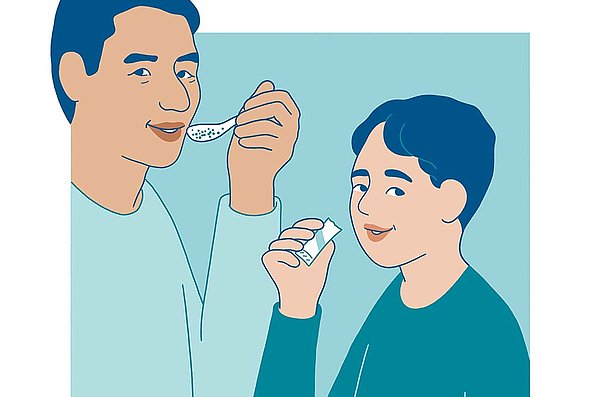Nitrosamines contamination of drug products are a concern for pharmaceutical companies. N-Nitrosamines are compounds, which are either proven, or potential carcinogens in humans. With the 2018 report of N-Nitrosodimethylamine (NDMA) found in various Sartan-type drug products, the regulatory bodies imposed a strict limit of acceptable intake of 96 ng/day (nanograms/day) for this specific nitrosamine. In these cases, the API was already contaminated with NDMA during drug synthesis. In the recent years, more and more drug products have been found to contain different nitrosamine impurities leading to recalls and shortages of medicines world-wide. [1]
The list of drug products besides the sartan drugs includes Metformin HCl, Ranitidine, Nizatidine, Rifampin and Rifapentine. Recently, API derived nitrosamines, so called nitrosamine drug substance related impurities (NDSRIs) were reported for several drug products. The list includes varenicline (N-nitrosovarenicline), quinapril HCl (N-nitrosoquinapril), propranolol HCl (N-nitrosopropanolol) and orphenadrine-citrate (N-nitrosoorphenadrine) with an established limit of 18 ng/day for these NDSRIs. [2]
| 𝙉-Nitrosamine Compound | Acceptable intake (ng/day) [2,3] |
| 𝙉-Nitrosodimethylamine (NDMA) | 96 |
| 𝙉-Nitrosodiethylamine (NDEA) | 26.5 |
| 𝙉-Nitroso-𝙉-methyl-4-aminobutanoic acid (NMBA) | 96 |
| 𝙉-Nitrosomethylphenylamine (NMPA) | 26.5 |
| 𝙉-Nitrosoisopropylethylamine (NIPEA) | 26.5 |
| 𝙉-nitrosodiisopropylamine (NDIPA) | 26.5 |
| Nitrosamine related drug substance impurities (NDSRIs) | 18 |
Table 1: References on N-nitrosamine limits in drug products.
Different routes of introduction, either in drug synthesis, drug product formulation, or during drug product packaging, were proposed. However, most of these routes involve the reaction of nitrite with a secondary amine (or a less reactive tertiary amines) under acidic conditions. [2]
Besides reaction of nitrite with secondary amines to form nitrosamines, there has been a recent report on the reaction of hydrogen peroxide with DMA to form NDMA through a degradation pathway. This pathway however also involves nitrite generated by degradation of DMA by hydrogen peroxide. [4]
While strategies 1 and 2 are feasible for existing formulations and new developments, strategies 3 and 4 are more feasible for new developments. When considering excipient suppliers, qualification of a supplier with low nitrite levels is key. A first report on nitrite level of excipients with values up to 285 ppm for certain excipients was published in 2011, however it did not include hypromellose (HPMC). [6]
Meanwhile, several reports have been published including nitrite values for hypromellose (table 1). [5,7,9]
The references indicate that hypromellose nitrite level might be varying depending on the supplier.
| Number of batches tested | Number of suppliers tested | Nitrite range (ppm) reported | Reference |
| 24 | 3 | 0.01 - 3.7 | [5] |
| 49 | 5 | 0.01 - 5.0 | [7] |
| 2 | 2 | 2.2 and 3.0 | [9] |
Table 2: References on nitrite in hypromellose from different suppliers
Shin-Etsu tested their cellulose ether and competitors and found lowest nitrite levels in Shin-Etsu hypromellose (low and high viscosity (reference PHARMACOAT® / TYLOPUR® and METOLOSE® SR / TYLOPUR® SR) using a validated analysis method, limiting risk of nitrosamine formation. The data was summarized in a Whitepaper in 2023, which can be downloaded (download here). [10]
Nitrite testing is a rather new topic for excipient manufacturers there is no historical data available and testing is not harmonized (there are UV, HPLC-UV, IC methods reported for e.g. hypromellose). It is noted by the International Pharmaceutical Excipients Council (IPEC) in their questionnaire on nitrosamines risk assessment, that nitrite test results from suppliers may vary and encourages excipient users to develop their own nitrite test for excipients. [11]
Shin-Etsu provides support in the development of analytical methods to enable pharmaceutical companies to test for nitrite in hypromellose.
Nitrosamines contamination of drug products are a concern for pharmaceutical companies. Nitrite plays an important role in the formation of nitrosamines in drug products, and nitrite levels may vary among excipients and suppliers for the same excipient. Shin-Etsu provides high quality excipients with low nitrite levels, supporting the pharmaceutical industry in supplying safe medicines to the patients. Please see the whitepaper for further details.

Solid pharmaceutical dosage forms, such as tablets and capsules, are the most used drug delivery systems, favored for their ease of production and patient preference.
Read more
Oral solid dosage forms (OSD) present numerous options, over semi-solids and liquids, to enhance patient acceptance to medicines.
Read more
In June 2022, Persistence Market Research presented a market outlook of orally disintegrating tablet (ODT) for the next years (2022 - 2025). According to this research “The ODT Market is likely to have compound annual growth rate (CAGR) of 8.5% over the forecast period.
Read more